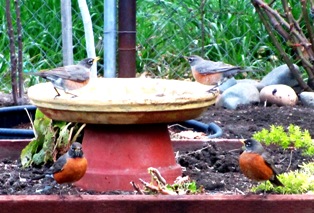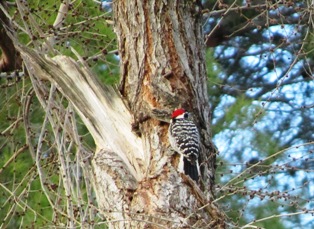Archive for March, 2013
Moving Dirt
Moving wet and damp dirt is not easy. Worse, it’s dirty work. However, we are working a master plan for the landscape that includes a sitting area, a back yard in two levels, and an area that includes fruit trees, raised planting boxes for flowers, and a large vegetable garden.
The window of opportunity has opened for improving the soil before planting our summer garden. The soil is not too wet, nor too dry. Right now, this clay soil can be worked by hand and by machine.
My neighbor has already turned the earth in his garden several times. A couple of days ago, he pushed his rototiller through the gate dividing our respective properties and offered to till the soil in the area where I’m going to plant my summer garden.
The turning of the soil exposed not only a huge amount of rocks but also gravel. The previous owner of my property had at one time used the area for a gravel driveway. That meant compacted soil and lots of stone and broken pieces of granite and marble (the former owner was a building contractor), which I set about removing by the bucket. I recycled that rock onto a pathway in the garden.
Come summer, I know I’ll be glad I did all that dirty work, reintegrated the rock and gravel, and amended the soil. Good soil will grow just about anything you put into it. And I’ve already started dozens of open-pollinated vegetables in seed flats in my kitchen.
Springtime Serenades from the Garden
The robins have arrived on the farmette. I’ve been moving dirt with the help of my husband and a worker and there are worms galore. If there’s anything a robin delights in more than dining on a fat, pink worm it surely is singing.
Throughout the morning, I hear its song–cheerily cheerily cheerily as it throws back its head and stands at attention in its red vest and gray-colored waistcoat.
The robin is one reason why I don’t believe in using insecticides for trees and lawns. Rains wash these contaminants into the soil, the earthworms eat the contaminated dirt, and the robins eat the worms. The cycle can be fatal for the birds.
High in an old elm tree with broken limbs and rot in places, a Nuttall’s Woodpecker adds its course drill of pr-r-r-r-rip to the robin’s song. What the woodpecker lacks in beautiful song, it more than makes up in its appearance. This fellow has a black-and-white striped face and back and a bar of black around its eye. Its cap is a vibrant splash of red.
These birds dine on insects from tree bark and frequently build their nests in a dead limb. Their clutch of white eggs hatch in about 14 days and the male shares responsibility with the female in incubating the eggs.
So while the work of moving dirt (so far, digging down to the septic to inspect and reinforce it and moving a section of dirt to the garden to replace an old gravel driveway) is tedious and time-consuming, the serenades of birds in the garden make the effort a bit more tolerable.
 Facebook
Facebook Goodreads
Goodreads LinkedIn
LinkedIn Meera Lester
Meera Lester Twitter
Twitter






